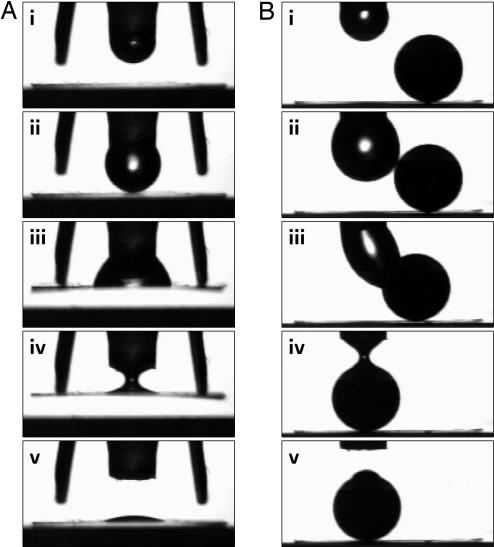Fig. 5.
Unit EODS actions for array applications. Snapshots from two dynamical sequences show a water droplet (e.g., half an EODS) pumped out from (i to ii) and back into (iv to v) the nylon nozzle. The entire sequence takes one switching cycle. (A) Controllable adhesion and release (compare the palm beetle) of a flat piece of aluminum foil (7 × 7mm × 10 μm). Upon contact with the foil (ii), wetting occurs and the foil is pulled up (iii) where it is held by surface tension against a pair of solid spacers. On droplet retraction (iv), the capillary adhesion is broken and the foil falls back (v). (B) Moving a solid Teflon sphere (2.4-mm diameter). Upon contact with the sphere (ii), wetting occurs (iii) after which the sphere is moved laterally one diameter. On droplet retraction (iv), the sphere is released (v). Repetition of this cycle by an adjacent EODS would continue the lateral movement of the sphere.

